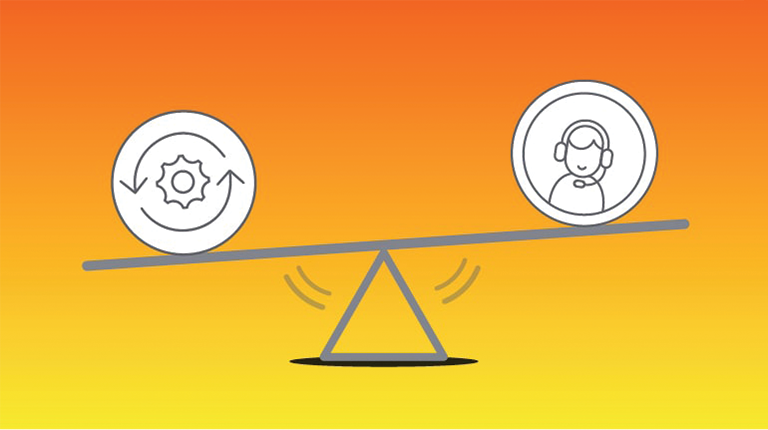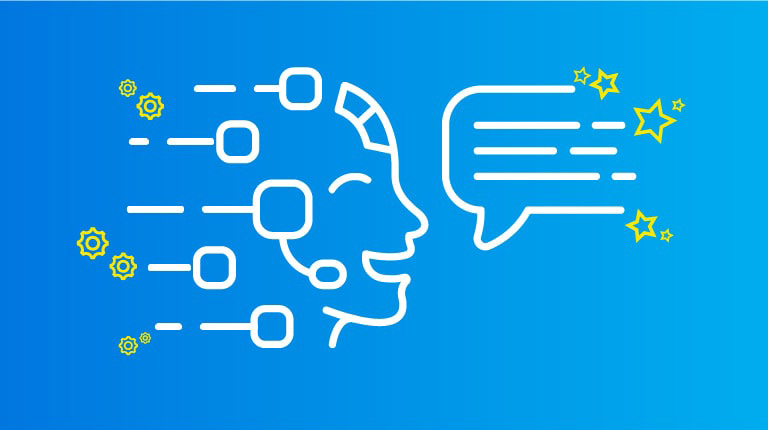Unfortunately, automation can have the reputation of being more frustrating than helpful. This misconception mostly comes from experiences with outdated and inefficient technologies, like IVRs and chatbots. These technologies have limited functionality and often fall short of customer expectations because their purpose is not to elevate customer experience, but rather to contain and deflect.
What does it mean to deflect?
Call deflection is a cost-saving technique where customers are re-routed to alternate, lower-cost, digital channels. For example, if a customer calls a business inquiring about which store location is nearest to them, a contact center using call deflection would send them to the website to find it. Why is this bad for customer experience? Well, customers should be able to communicate with a brand on the channel that they choose. Maybe the customer had a hard time navigating the website, which is why they called. Or maybe they just prefer to use voice channels to get things done. Regardless for the reason, customers should be in control of the interaction.
What about the cost?
Call deflection is an attempt to lower operating costs by freeing up agents to help other customers. So the alternative must be more expensive, right? Not quite.
To explore this, we must first consider the cost of bad customer experience. According to PwC, 73% of U.S. consumers say that customer experience is a very important factor in their purchasing decision, so much so that even if they love a company or product, 59% will still walk away after several bad experiences and 17% will walk away after just one bad experience. So if your business’s outdated techniques and technology is detracting from customer experience, it may be costing you more than you think.
And secondly in regards to cost, we must consider alternatives. If IVRs and chatbots are used to lower costs at the expense of customer experience, is there an option that could raise customer experience while reducing costs?
Yes. Here’s How:
Self-service. But let’s take a step back. Not all self-service systems are the same. So when we say this, we are talking about a self-service that is able to assist customers on par with what a human agent could. And while the technology required is quite advanced, proper integration and design actually results in lower operating costs and more revenue. We’ll explore these aspects as seen in Interactions Intelligent Virtual Assistant (IVA) that contribute to this below.
Better Customer Experience
Instead of a system that detracts from customer experience, like IVRs and chatbots, IVAs are a solution that can actually improve customer experience. We can clearly see this when we look at what constitutes a good customer experience. According to PwC, speed, convenience, helpful employees and friendly service matter most, each hitting over 70% in importance to consumers.
Speed: IVAs support a quick and effortless customer experience by reducing or eliminating wait times, providing human-like conversation so that customers don’t have to waste time repeating themselves, and offering well-designed conversation flows so that customers don’t have to sift through menu-trees or listen to irrelevant options.
Convenience: As mentioned earlier, customers should control the conversation. Customers should be able to call anytime of day (or night) on any channel of choice, and be able to speak in a way that is natural to them. An IVA is available all the time, and can understand what customers are saying, despite heavy accents, background noise, or unfamiliar phrasing.
Helpful Employees: IVAs contribute to this notion in two ways. The first is by supporting agents to better support customers. With an IVA, repetitive tasks that do not need the assistance of humans can be handled entirely through self-service, thus giving more time and effort from human agents to the tasks that need their expertise.
The second way is by an IVA actually being a helpful employee itself. Through our patented Adaptive UnderstandingTM technology, IVAs can communicate just as a human would. And because IVAs have a higher propensity to retain and recall information more than humans, they are able to personalize every interaction in a way that a human cannot. IVAs have access to various data sources including CRMs, knowledge bases, and payment systems. This means that IVAs have the ability to leverage multiple sources of information on a single customer at a single point in time. And, just like your very best agent, IVAs are able to incorporate this into the customer care interaction.
So what can an IVA do for you?
Deliver spectacular customer experience across industries and use cases to create lasting relationships and loyalty with customers, at scale. By capitalizing on the most important aspects of a good customer experience, IVAs can enable transformation in the contact center and throughout the entire business. Outdated and ineffective technologies, like IVRs and chatbots, can’t offer this transformation because they are built as siloed applications meant to deflect customers, but end up just being an extra step in the customer journey. IVAs on the other hand revolutionize the customer journey by streamlining and optimizing all processes, resulting in an elevated customer experience.
Want to learn more about IVAs? Check out our whitepaper.




